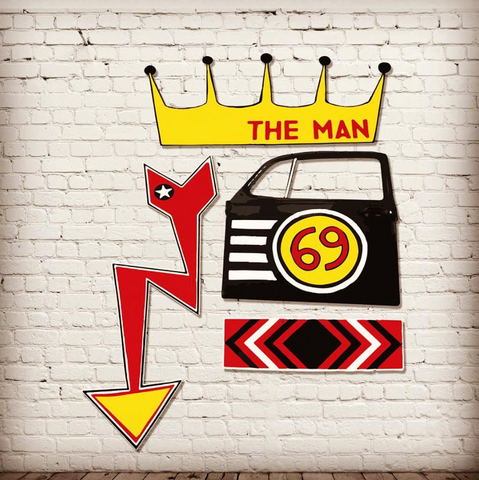We've been pondering patronage.
At CronArtUSA, we’re constantly reminding ourselves to lean into our main mission of F-U-N. We see art as not just a commodity or luxury-- but as a necessity. A universal need that links communities, cultures, and ideas together, under the banner of understanding. With art, we see the best and the worst of ourselves-- and through art, we find our collective consciousnesses connected. Art enables us to reach across aisles and shake hands and listen and make sense of our differences. It allows us to breathe, gives us the courage to speak, and provides an escape into the imagination, in ways that no other industry can. In art, we are able to question our beliefs, shift our perspective, and grow as responsible, curious, and engaged humans of the planet.
Art is one of the greatest wonders in the world, and we believe that the people who create that kind of work for humanity are just as important as the banker or the lawyer or the politician. Everyday, when the artist wakes up and steps up to his/her/their canvas (or in Artist Ryan Cronin’s case, board), onto the stage, or into the pages of the next great human novel, it’s a risk: perhaps the work won’t ever be seen. Or heard. Or understood-- or at the very least, respected. Then again, this isn’t news: post-Renaissance thinking steered away from the artist (the creator of the art), and focused on the art itself. The artist-patron model-- and the kind of jobs it unearthed-- vanished and was replaced with a funding model that focused on a piece or a collection, rather than an investment in the artist and his/her longevity.
However, with recent threats to the NEA-- and a general societal shift into the digital age-- the patronage model is making a strong comeback, as observed by Jennifer Miller in a New York Times article from May of last year, wherein she notes a strong “emblematic of a shift in how some arts enthusiasts, from wealthy individuals to grant-making foundations, are relating to creators.” Rather than placing sole focus on artistic consumption, by which art is viewed without much more than a nod of financial respect to the artist, the patronage model has slowly been making a triumphant return, “...reminiscent of the Renaissance, when royal houses provided room, board, materials and important professional connections to talented artists of the day,” cites Miller. (In other words, patrons help artists prosper.)
When the opportunity to open up a second CronArtUSA location landed in our laps, we had thought long and hard about choosing a place. Strategically-speaking, we had to look at historical trends and where artists were choosing to go based on the communities that welcomed them-- and invested in them. When it came down to it, Westport, with its rich history of artist patronage, was the logical next step in Ryan’s journey to discovering a new audience.
And within the first week of our time in Westport, it’s become clear: we chose right. The Westport population hasn’t merely shown interest in the art itself: they’ve asked about the person behind the art. It’s been a solvent, fervent reminder of why we do what we do, reminiscent of the discovery of our first tribe (we love New Paltz and to this day can’t believe how lucky we are to have made our home there): art isn’t just to be looked at; it’s to be consumed, a message to digest and take with you, to encourage you think and grow and stretch and wonder.
And have fun doing it. The conversations we’ve had with our new constituency about the joy, hope, and general F-U-N behind each and every one of Ryan’s works have given us new drive with a new perspective: art is necessary everywhere. And more and more, people are realizing this crucial necessity in this current social, political, and cultural climate. In this time of need, a new wave of patrons have stepped forward to help lead the charge. They’re paving the way for a new generation of artists to succeed and strengthen our communities with what they need: art. Much like our first gallery, located in the charming Water Street Market in New Paltz, NY, our neighbors want to see us expand and spread because they know that our work is just as important as the work of the bankers or lawyers or politicians-- or doctors, teachers, plumbers, electricians, waitresses, and all of the other important jobs that make an accessible, prosperous, beautiful community function.
And for that, we’re very grateful indeed.
Interested in becoming a patron of Ryan’s work? Come see us sometime: our house is your home. We’re located at 31 Church Lane in Downtown Westport and 10 Main Street at the Water Street Market, New Paltz, NY.
In the meantime, learn more about the man behind the work: meet Artist Ryan Cronin.
- Blake Pfeil, Operations @ CronArtUSA






